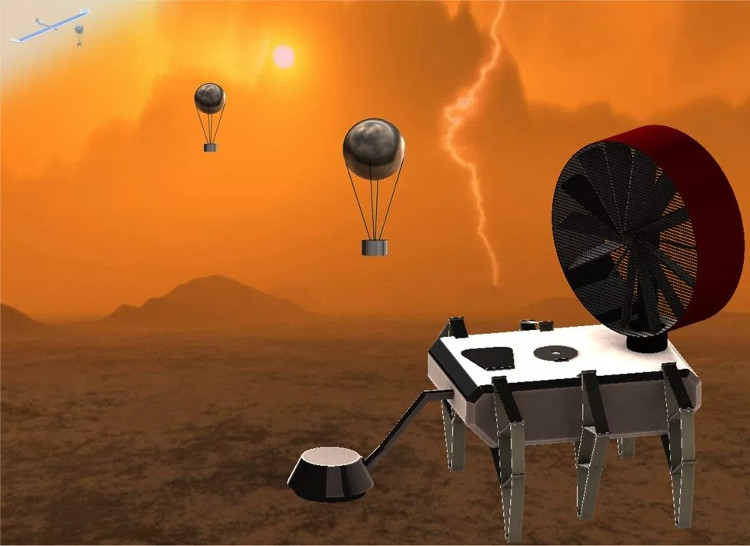Using mechanical calculator 2,300 years ago to study Venus
The ancient Greeks built mechanical computers capable of accurately predicting astronomical phenomena. NASA hopes to build a similar device to study Venus.
The US Aerospace Agency (NASA) is planning to build a pure mechanical device , called AREE (automatic probe for harsh environments), based on the idea of an Antikythera mechanical computer. of the Greeks 2,300 years ago, can do many different activities, according to Nasa.gov.
Since the device is 100% mechanical, AREE will not be damaged like electronic devices. With high temperature resistant alloy materials, the probe will be able to operate for weeks or months to collect data and specimens from the Venusian surface. This scientific data is very important in providing information about the dynamic model of planetary systems.

Models of purely mechanical probes to study harsh environments.(Photo: NASA).
The probe will harness wind power from the tuabine and store it in springs. Jansen mechanical pins will be controlled mechanically and logic system, programmed to perform the task. It can collect basic scientific data such as wind speed, temperature and seismic events.
Data transmission obtained to Earth is the most difficult part of system design. Several options are being studied, including the minimum scattering (reflected light returning to the source with the smallest scattering), a simple high-temperature electron detector, or logs The type of recording shot up by airship to a high-altitude unmanned aircraft capable of transmitting signals back to Earth.
This is not only an interesting new concept, but also a change in how to study harsh environments. Current methods are following ways to collect as much information as possible for a short time before being damaged. AREE does not follow this trend, only collecting basic scientific data, but for a long time.
In addition to Venus, this method can also be applied to other harsh environments, including the radiation belts of Mercury, Saturn and the interior of giant gas clusters, Earth's crust and volcano. throughout the solar system.
Venus is the planet with the harshest environment in the solar system, with sulfuric acid atmosphere and temperatures up to 450 degrees Celsius, pressure on the surface of more than 90 atmospheres. Previously, only the spacecraft of the Soviet Union's Vega program landed on the surface of Venus successfully. However, the probes worked only for 23 - 127 minutes before the electronic system was destroyed by the environment. 30 years later. The exploration of Venus is only a little progressive. The probes were able to operate for several hours with phase change materials .
- Venus can stay?
- The Chinese bamboo rod is the oldest decimal calculator
- Overview of Venus
- After 8 years of Venus exploration, Venus Express has run out of fuel
- The ocean may exist on Venus on Earth about 700 million years ago
- NASA wants to bring people to Venus
- NASA concussion statement about Venus
- Venus Experss are about to plunge into the Venusian atmosphere
- The weirdest computer ever made - made from assembled toys and fishing lines
- Venus is about to be a
- Jupiter and Venus together converge
- 10 most interesting things about Venus
 Van Allen's belt and evidence that the Apollo 11 mission to the Moon was myth
Van Allen's belt and evidence that the Apollo 11 mission to the Moon was myth The levels of civilization in the universe (Kardashev scale)
The levels of civilization in the universe (Kardashev scale) Today Mars, the sun and the Earth are aligned
Today Mars, the sun and the Earth are aligned The Amazon owner announced a secret plan to build a space base for thousands of people
The Amazon owner announced a secret plan to build a space base for thousands of people